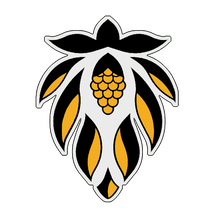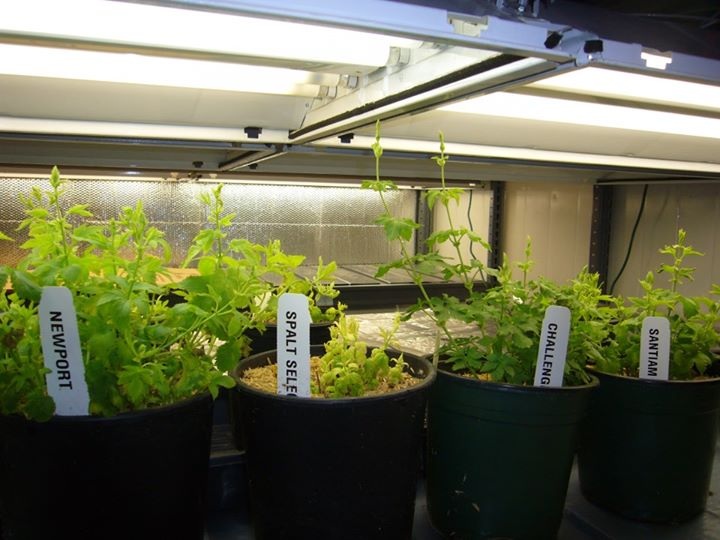|
Here is a picture demostrating the effects of prolonged high air and soil temperatures from a controlled study Brian and I did at Great Lakes Hops Lab . The hops were subject to a minimum temperature of 90 deg. F. - maximum 110 deg. F. regime for three weeks while emerging from dormancy. Photosynthesis pretty much shut down at leaf temperatures above 90 deg., resulting in chlorosis and reduced leaf size on most varieties. Other observations noted were : - Dropping air temperatures below 90 for even 2 hours / 8 hour cycles markedly increase the leaf color. - Soil temperatures above 95 deg stopped fine root hair growth- adding to the chlorosis. - different varieties can tolerate high temperatures better than others Varieties Newport and Challenger both handled the heat well (Didn't even dis-color Challenger). Santiam showed reduced growth, while Spalter Select really took a hit.
Take away -??- The Western European varieties (German) Spalters, Hallertauers, Tettnangers are more sensitive to high air and soil temps than American varieties like Newport, Galena, Chinook, and Cascade. Spalter Select obviously cannot be grown like Newport. This does not mean the former group can't be grown successfully - it means they have to be grown DIFFERENTLY. By "differently" I would suggest closer raised row and plant spacing to create cooler temperatures in the lower hopyard canopy, leaving more lower folige to shade the soil (especially in newly established hopyards), using aerial sprinklers to cool the leaves at mid-day, and mulching new plantings to reduce soil temperatures. I think is is a great example of how "one size does not fit all". |
Details
Blog AuthorLynn, the head hop grower at Great Lakes Hops has over 30 years of experience in the horticultural field. Browse the blog articles here to find useful growing information for humulus lupulus, based on personal experience and observations at Great Lakes Hops. Archives
January 2020
Categories
All
|



 RSS Feed
RSS Feed